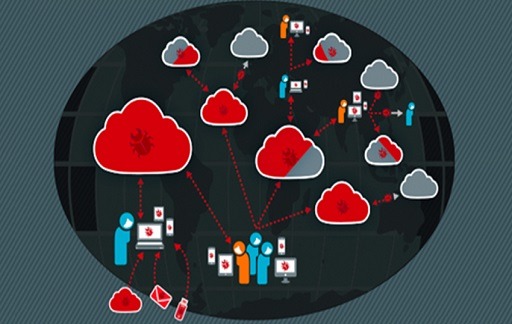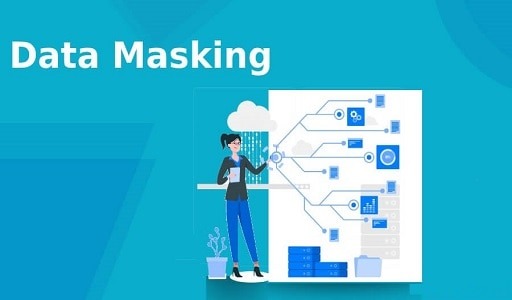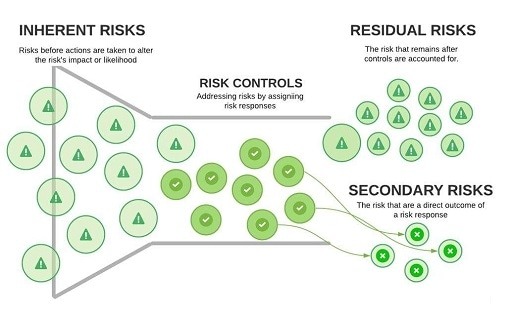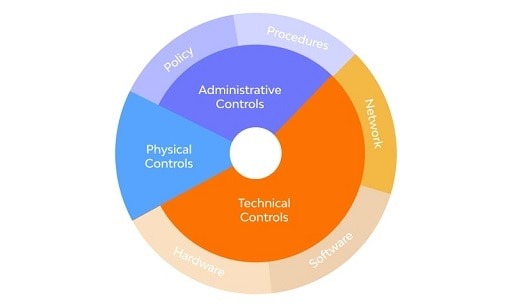Cloud Malware: Everything is being moved into the cloud at this point. The more data that is stored in the cloud, the greater the interest there is among hostile actors to launch attacks on cloud services.
In order to steal data and cause service disruptions, the attackers utilize malware. Even if malware isn’t as widespread in the cloud as it is on home computers, the fact that it’s becoming more prevalent in the cloud is cause for alarm.
In addition, corporations do not appear to be as aware of it as you might anticipate they would be. However, what exactly is meant by the term “cloud malware”? What are some of the several kinds of cloud attacks that are known? And are you able to defend yourself against them?

What is Cloud Malware
Malicious code that is directed toward a cloud platform is referred to as cloud malware. The malicious malware is comparable to what you would anticipate finding on PCs and mobile devices. The difference lies in the objectives of the malware and the mechanisms it employs to cause disruptions in the cloud.
Malware that is hosted in the cloud is more of a threat to companies than to individual consumers. Yes, as a client who uses cloud services, we want the platform to continue to be secured against malware for the sake of maintaining the security and confidentiality of our data. But there is very little that can be done about it.
The vast majority of well-established cloud service providers implement stringent security procedures to protect their customers against cloud-based malware. You, as an end-user, do not need to worry too much; nonetheless, you should keep an offline backup of your vital data so that you are prepared for any emergency that may arise.
Types of Cyberattacks on the Cloud
Malware that is hosted in the cloud can be distributed through a variety of different attacking methods.
-
DDoS Attacks
The Distributed Denial of Service, also known as DDoS, is a common form of cyberattack that interferes with a service by making an excessive amount of requests. DDoS attacks, when directed toward the cloud, have the effect of bringing an entire network of apps and services to a halt.
It is currently simpler than ever to initiate a DDoS assault. Your data are not at risk as a result of this assault; nonetheless, your access to the service may be compromised. If a service is consistently targeted by DDoS attacks, users are likely to abandon it in favor of another, more reliable cloud provider.
-
Hyperjacking
When it comes to cloud computing, it’s usual practice to compartmentalize individual services using virtual environments and virtual machines (VMs).
An assault known as hyperjacking is designed to take advantage of the hypervisor, which is the program that is in charge of generating and managing VMs in the cloud. If a threat actor is successful in taking control of the hypervisor, they will be able to modify operating VMs and perhaps do damage to them.
If an assault of this kind is successful, the attacker could carry out a number of nefarious behaviors, one of which is the illegal monitoring of data. Check out our rundown of hyperjacking if you want additional information on the topic.
-
An attack against the Live Migration
Even if migration to greater resources, security, and offerings in the cloud is inevitable, the cloud itself is scalable. Attackers make use of this time to either seize control of the new infrastructure, implant malicious malware into the cloud system, or cause disruptions to the migration process.
Due to the singular nature of this form of attack, not every provider anticipates that it will transpire. A lot of people rely on automated live migration without thinking about potential concerns.
-
Attacks Using Hypercalls
This form of attack is very similar to hyperjacking, with the exception that it targets a particular component of the virtual machine manager known as the hypercall handler in order to obtain access to the VM’s rights.
When an attacker has gained the necessary access, they are able to run malicious code on a virtual machine (VM).
-
Cloud Storage Attacks
Considering that the storage component of the cloud platform is one of the most crucial components that is targeted by attackers, it is always important to ensure that it is safe. It is possible for bad actors to get unauthorized access to the data, steal it, or destroy it if the cloud storage is not correctly set up.
How to protect against Cloud Malware attack
Many businesses already have a predetermined list of precautions and protocols in place to guarantee the highest level of safety. Nevertheless, because the number of malicious cloud programs is growing, it is of the utmost need to go above and beyond the industry norm and take additional precautions to defend the cloud platform.
Some suggestions to strengthen the defense are as follows:
Improve the Access Control
Even though we covered each of these recommended practices for implementing zero trust security in a separate article, you still need to follow them.
If you do so, you will help avoid account takeovers, secure account authentication, and reduce the amount of harm that will occur if access is compromised. An effective method to authorize and allow access to data can restrict the influence that malware can have on any cyberattack that is directed against you. This is not a phenomenon that is unique to cloud malware.
Protection of Individual Endpoints
An organization’s endpoints consist of all of the computers, devices, and servers that are linked to the network. Infections that start on endpoints have the potential to go up into the cloud. If you defend the endpoints, you will have excellent protection against malware that is hosted in the cloud.
Educate your Employees and Users
When trying to get into a network, attackers will use any and all available connection points. If a cloud service provider teaches both its workers and its users about common security dangers and how to respond to them, it will go a long way toward mitigating such risks.
To guarantee that their employees are safe and to assist in maintaining the systems secure, every firm needs to equip their staff with materials and guidance on the best security practices currently available.
The success of a wide variety of cyberattacks can be attributed to human error. Therefore, you can ensure that the attacks will not harm the cloud platform if you can reduce them to a manageable level.
Make use of a supplementary malware scanner for storage
It is only viable to pursue this option if you have the means to install an additional malware scanner. A tool that does everything ought to be plenty for you, but having an additional scanner that focuses on the storage space might be of assistance. After all, there is never a reason to worry about an increased level of protection.
Deploy Strong Data Backup Strategy
To recover from any kind of malware attack on the cloud, you need to have a redundant backup plan in place. This applies to everything.
In most cases, this includes a backup that is stored offsite, a backup that is stored locally, and a backup solution that is stored in the cloud.
Threats posed by malicious code in the Cloud
Malicious code can compromise the security of any system it is run on, regardless of whether or not it is hosted on the cloud. Every single platform and service will, at some point, be susceptible to at least one type of vulnerability.
The security of cloud platforms cannot be assumed to be bulletproof. Combating cloud-based malware while maintaining system functionality requires more work and attention to detail.
You should be able to get a good start by utilizing some of the advice presented in this article. The other aspects are determined by the kind of cloud service you operate, the kind of infrastructure you make use of, and the kinds of security technologies you select to safeguard the platform.
Organizations will be better able to take notice of the cyberattacks that are aimed at the cloud as greater awareness is raised.
Would you like to read more about Cloud Malware-related articles? If so, we invite you to take a look at our other tech topics before you leave!










